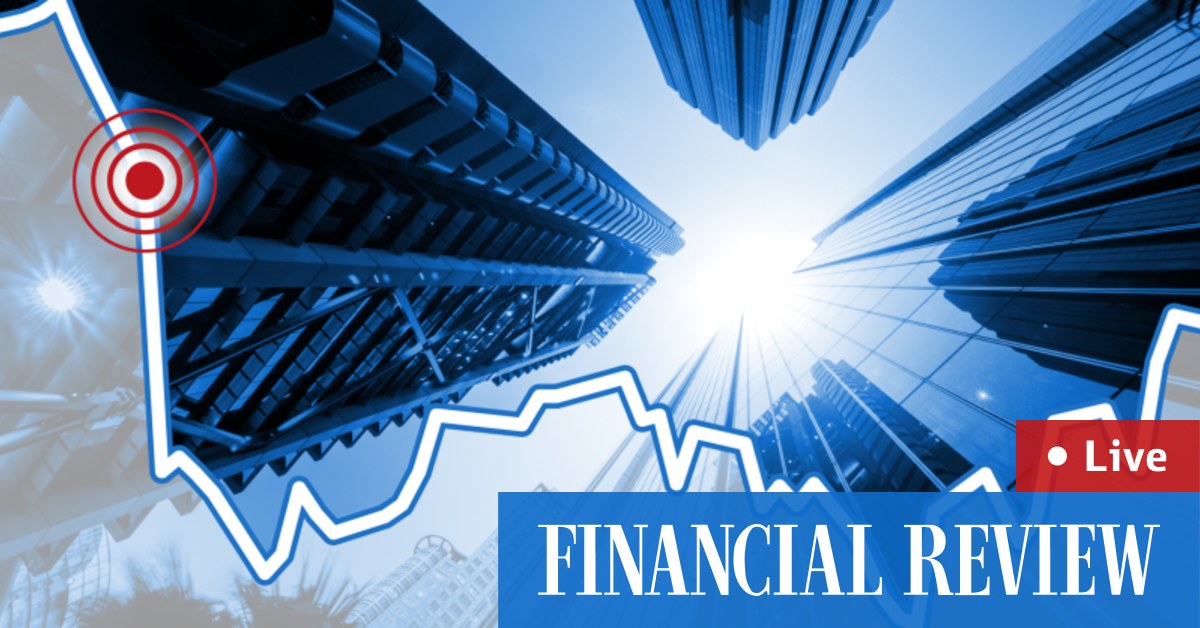ASX 200 LIVE: Shares fall; IAG sued over loyalty discounts; BHP bid deadline looms; Fonterra boosts guidance; Ramelius with takeovers panel; Fisher & Paykel eyes profit bounce

- by Admin
- May 28, 2024

Australian shares slumped 1.3 per cent to a three-week low after the pace of inflation surprisingly picked up in April, denting hopes of an interest rate cut this year.
Data on Wednesday showed the April CPI indicator accelerated to 3.6 per cent year-on-year, from 3.5 per cent in March and above the 3.4 per cent expected by economists.
The S&P/ASX 200 dropped 79.2 points to 7687.5, following a 0.3 per cent fall on Tuesday. The All Ords also declined 1 per cent.
All 11 sectors fell, led by losses in consumer staples and industrials.
Mining giants weakened after iron ore futures fell to $US117.90 a tonne in Singapore, from a peak of more than $US122 touched last week. Fortescue shaved off 3.1 per cent and Rio Tinto shed 1.5 per cent. BHP was the most resilient, up 0.1 per cent ahead of a 5pm deadline in London to commit to a revised offer for Anglo American. The two parties are reportedly closer to clinching a deal.
Shares in development giant Lendlease receded 1.5 per cent on news it had struck a deal to sell its US construction business after unveiling a $4.5 billion plan to pull back from its offshore operations to focus on Australia.
The big banks also faltered and insurance giant IAG dropped nearly 3 per cent after coping a fresh class-action lawsuit by Slater & Gordon over loyalty discounts on home insurance policies. If sustained, it would be its biggest one-day fall since February.
IT services provider Data#3 leapt 3.7 per cent after Morgan Stanley moved the stock to “overweight” citing compelling value and AI tailwinds.
Inflation surprise
The Australian dollar briefly climbed to US66.65¢ after the inflation report, but was unable to keep gains. It was back at US66.50¢ where it started the session, and on track to end the month with a 2.7 per cent gain. If sustained, it would be the biggest this year.
Bond yields rose with the three-year rate up 8 basis points to a one-month high of 4.11 per cent and the 10-year return added 7 basis points to 4.43 per cent.
Money markets have slightly increased the probability that the Reserve Bank will lift the cash rate to 4.6 per cent this year. They imply a 20 per cent chance by September, from 16 per cent before the report and have pushed back the likely timing of a rate cut. They are fully priced for an easing in December 2025, from May 2025 indicated last week.
In summary, traders are unsure what the next move will be in Australia in contrast to other developed markets where rate cuts are fully priced in.
“Inflation in Australia is rising, goods deflation has stopped and domestic inflation is stubborn,” said Warren Hogan, chief economist at Judo Bank. “The RBA needs to raise the cash rate next month.”
Stocks on the move
Respirator company Fisher & Paykel leapt 4.4 per cent and was the biggest outperformer on optimism about 2025 net profit after 2024 was hit by three “abnormal items”.
New Zealand dairy company Fonterra jumped 4.1 per cent after boosting its full-year earnings forecast.
Tunisia-based and ASX-listed Phosphate miner PhosCo was trading flat after a Tunisian court rejected its appeal in an ongoing dispute over legal ownership rights to the Chaketma Phosphate Project.
Ramelius dropped 5.3 per cent as it filed an application with the Australian takeovers panel about a deal involving Westgold Resources and Canadian-based Karora Resources. Westgold powered up 5.6 per cent.
The Latest News
-
December 23, 2024Championship three-peat reward for ‘clinical’ Aussies | cricket.com.au
-
December 23, 2024Australian tennis star Purcell takes on voluntary provisional suspension for breaking anti-doping rules
-
December 23, 2024‘Back myself and be fearless’: Konstas lives by mantra in first hit | cricket.com.au
-
December 23, 2024Wimbledon champion accepts ban for anti-doping breach just months after winning US Open
-
December 23, 2024Australian tennis star Purcell takes voluntary suspension over anti-doping breach


